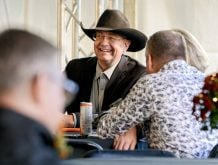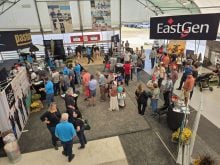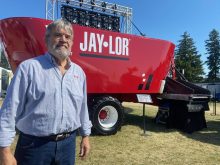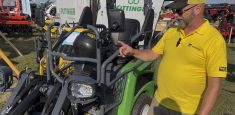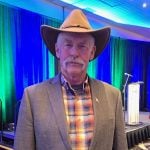Farmtario asked producers three questions during Canada’s Outdoor Farm Show:
Q: What are the top three challenges on your farm?
Q: How are you managing rising input costs?
Q: What are your thoughts on the government’s focus on funding sustainability initiatives rather than yield as it used to?
Here are the results.
Read Also
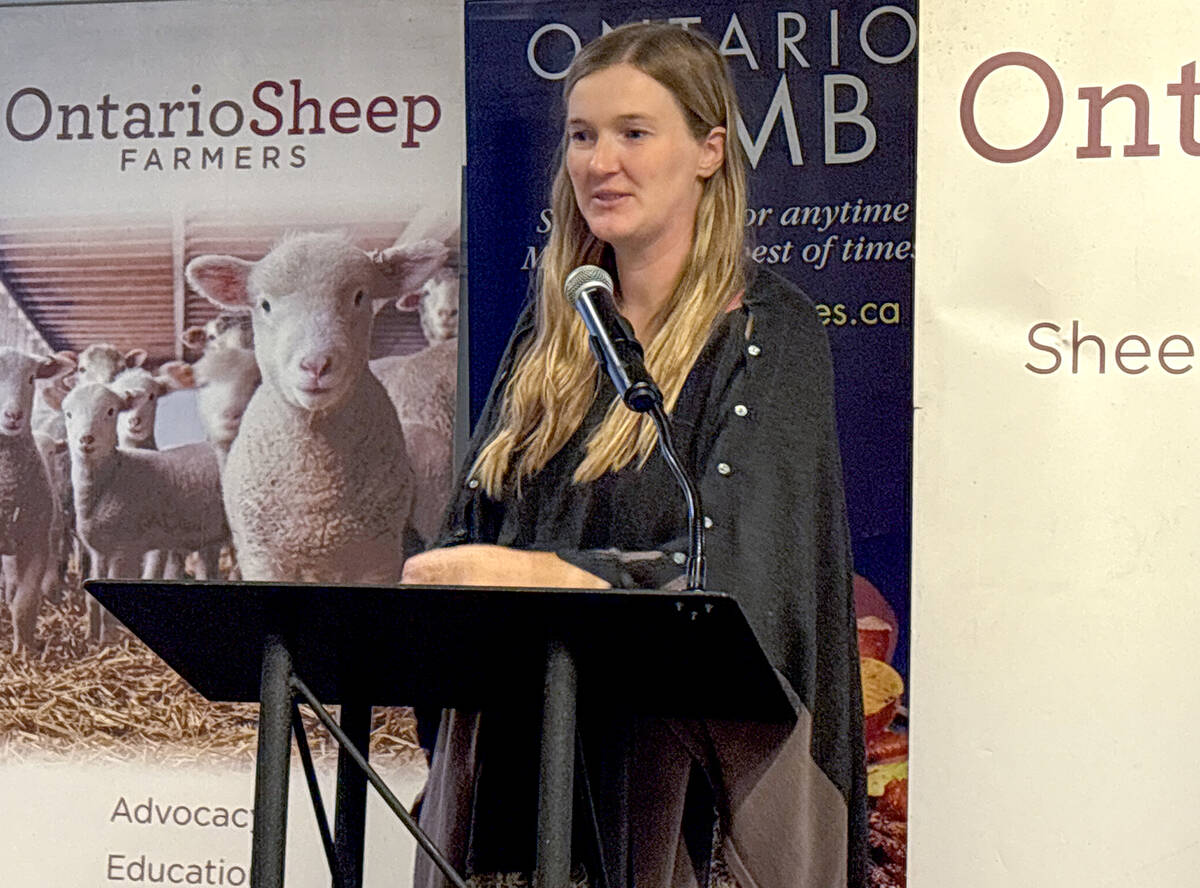
Footflats Farm recognized with Ontario Sheep Farmers’ DLF Pasture Award
Gayla Bonham-Carter and Scott Bade, of Footflats Farm, win the Ontario Sheep Farmers’ 2025 DLF Ontario Pasture Award for their pasture management and strategies to maximize production per acre.
Tom Harlton, who farms sheep and 150 acres of soybeans and wheat north of Granton said his top three challenges are getting enough sleep, sheep not lambing on the coldest night of the year and splitting his two farms evenly between two kids when there is a 50-acre discrepancy.

The answer, tinged with mirth, reflects the wisdom of a multi-generational farmer with 50 decades under his belt and retirement on the horizon. Harlton doesn’t get worked up about anything except seeing the century-plus farm handed down to his kids.
“The last few years, nothing has been too challenging,” he said. “After you’ve been at it so long, you’re looking for expenses (to write off).”
Harlton used $35,000 worth of inherited machinery, hired out larger jobs and concentrated on paying off farm debt.
Early in his farming career, a neighbour told Harlton that farmers either pay interest or pay income tax. Young farmers pay interest and don’t worry about income tax, but the coin flips as farmers age, so finding write-offs to lower income tax is critical.
“When you’re looking for expenses, and you’ve got to fertilize, you might as well put it on. It’s a good write-off,” he said when asked about balancing rising input costs.
Harlton said he’s got a handle on how to grow crops, but building sustainability is essential. Government-funded programs makes it easier to incorporate sustainable practices.

Tim Prior, of Brussels Agri Services Ltd., and Grazing Meadows Wagyu said he faced challenges when he was younger. Now 60, he built a new barn two years ago when faced with capacity issues. It requires planning, but Prior said he feels blessed to be a solution provider, whether selling fencing, cattle handling equipment or Wagyu beef.
“I don’t look at them as challenges. Sometimes they are opportunities.”
In 1996, Prior bought a 100-acre cash crop farm and converted it to pasture to support his beef operation, which keeps input costs lower.
“That’s my feed. I’m doing rotational grazing and to get more production profitability, well, that’s the Wagyu end,” he said.
Regarding government sustainability funding, Prior wishes benchmarking was a priority to measure the sustainability of agriculture and individual operations, especially regarding carbon sequestration.
“We’re on the right track. I wish we knew how to measure where we are. What tells me right now if I do things now to change to do better? How do I know where I was? I need a benchmark.”
It’s challenging to quantify government sustainability and climate control demands without such a benchmark, he said, especially if the operation has maxed out possible sustainability changes.
Prior said a worldwide climate change initiative is required to meet global needs, not just sector-specific demands.
“What we do is very sustainable, and we’re sequestering as much carbon as you can,” he said. “Everybody’s adopting and doing as far as agriculture. We all hope the rest of the world is doing that: the car manufacturers, the plants, and everybody else. Don’t blame it on our cows, farting and burping that are doing it.”

Bonnie den Haan, of Sheldon Creek Dairy in Alliston, said labour is a top concern, followed by weather, urban encroachment on farmland, and consumer acceptance of farming and farming systems.
She said they’ve had decent luck cutting and baling hay, but there is a lot of straw waiting to be baled.
“We’ve been lucky; we’ve cut hay at the right time, so we haven’t had too much spoilage.”
Sheldon Creek has been forward selling and watching the markets, mainly corn, wheat and soybeans, to balance input costs with potential profit.
“It depends on what’s happening on the other side of the world, right? So, we keep a very close eye on it,” she said. “Hurricanes are coming, and I would like to have it (crops) off before the rain – the monsoon season.”
den Haan said every industry must embrace sustainability, and if the government can assist in uptake, it’s a good thing.
“We’re not a high-margin industry. We have some real downs and a few ups, but if the government can help us be sustainable or put in more sustainable infrastructure, go for it.”

Ethan Wallace, a dairy farmer in Huron County, said his top three concerns are rising interest rates, labour and trade issues.
“Dairy has been sacrificed in three subsequent trade deals for the benefit of other industries, and some of those benefits have never come to fruition. I’m more of a proponent of do no harm. Gains in one industry shouldn’t come at the cost of another industry. Across the board in agriculture, we need to build everybody up,” said Wallace.
Wallace said he maximized manure efficiency to keep inputs low without sacrificing yield or profit. He is happy to utilize sustainability programs to be profitable and set his kids up for success in the future.
“We need to be sustainable and profitable – I think those two go hand in hand,” he said. “Yield is great, but if it costs you the farm to get that yield, it’s not necessarily the best practice.”

Kyle Burnett grows soybeans, corn and wheat on 1,500 acres near Denfield. He said the three most significant challenges for his operation this year have been weather, labour and inflation. With the price of everything rising, including inputs, Burnett said they’ve pulled back in certain areas.
“We’ve definitely scaled back on the fertilizer side of things,” he said. “We just didn’t put as much on. We’ll know this year when we get into the field whether it went good.”
The wheat crop did well, he added. Burnett didn’t weigh in on the sustainability versus yield funding focus.






